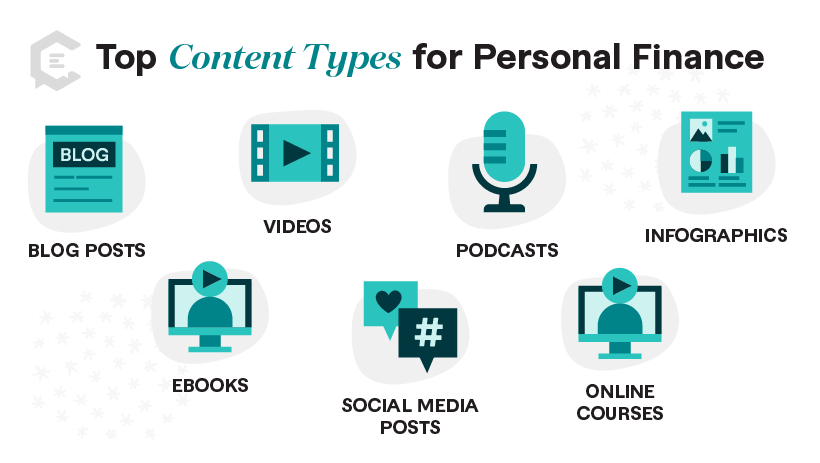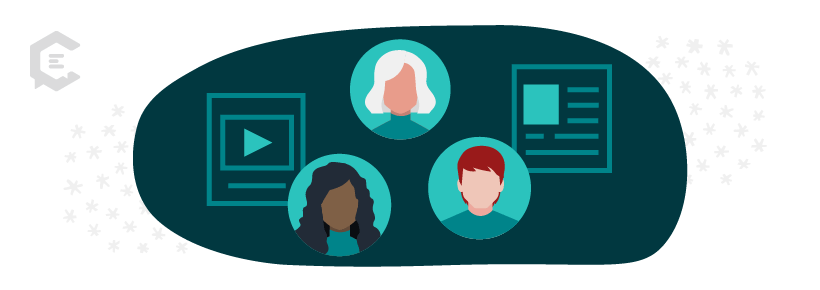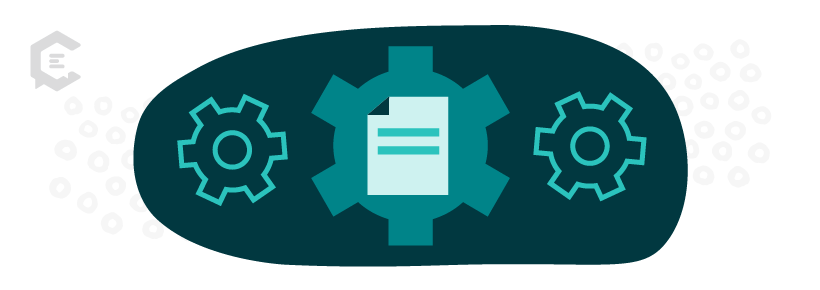Are you trying to determine the best content type for personal finance education? Do you want to boost your content marketing strategies while better communicating with your target market and fostering financial literacy?
Let’s dive deep into various content types and when to use them for different types of personal finance.
The Role of Content Types in Personal Finance Education
Personal finance can be a complex topic, and finding ways to connect with your target audience is important.
Everyone learns differently. Some are visual; others are auditory. This is where different content types can help. The best content marketing strategies for financial topics incorporate multiple types of content. However, it depends on the topic and the specific audience.
To leverage content marketing in the finance sector properly, plan what topics to cover and how to cover them. And be sure to take regulatory compliance into consideration. The finance sector is highly regulated. So you’ll need to ensure that your content is up to date, follows all the latest best practices, and does not cross any ethical or legal lines.
Top Content Types for Personal Finance
So what are the top types of content for the personal finance space, and what are the advantages of each? Let’s take a look:
Blog posts
Blog posts remain the most common and, in many ways, the easiest content type for personal finance education.
They’re short enough to hold the reader’s attention but long enough to allow you to communicate a lot of information. You can spice up your blog posts with images, from photographs to tables or charts. These should typically run between 500 and 1,000 words, though this can vary.
Videos
Videos work well on social media, especially when they’re short. If you can do an explainer video in five minutes or less, it could attract a lot of attention.
But you can also use longer videos on your website or even embed this type of content into your blog posts. Remember to keep your videos snappy and fast-moving but also clear and helpful.
Podcasts
Podcasting has become a significant trend in all fields, and it can work well in personal finance. Think of podcasting like old-fashioned radio. No visuals, just a couple of people sitting around talking about a particular topic. Podcasts generally work best in series. For example, you might do a four-episode series on buying a home and then a separate series on getting out of credit card debt.
Infographics
An infographic, or information graphic, relies heavily on visuals. You might use relevant photos, charts, or graphs accompanied by a few short sentences. Bulleted lists work exceptionally well here.
The goal of an infographic is to quickly share relevant information without your audience getting lost in a wall of text.
Webinars
A webinar, or web seminar, is a live online presentation.
This can be one of personal finance’s most useful content. You can bring subject matter experts to engage directly with your target audience. And presenters can share everything from documents to PowerPoint presentations. Of course, traditional audio and video still work too!
A webinar encourages two-way conversations. Attendees can ask questions and engage directly with the presenters. You can even record the webinar and host the recording on your website for future reference.
EBooks
An eBook is a piece of long-form content. It’s typically around 3,000 to 5,000 words and laid out in book format, complete with chapters and a table of contents. EBooks allow you to dive deeper into a specific topic than with a traditional blog post.
For example, you might produce an eBook on paying for college or getting started in the stock market. EBooks typically rely primarily on written content, with some graphics or sidebars to break up the text.
An eBook can be a handy marketing tool. For example, you could offer your e-book on your website to those who agree to join your mailing list. Or, provide it as an added incentive when someone signs up for a webinar.
Social media posts
Social media has become an essential element of content marketing. Let the social media platform determine how you structure your post.
For example, Instagram is very visual, with minimal text. Twitter limits the number of characters you can use. LinkedIn posts tend to be text-heavy and a bit more formal.
No matter which platform you use, though, get right to the point, or people will scroll right by. Be sure to use relevant hashtags to boost visibility!
Online courses
Personal finance topics can be complex to fully convey in a single post or an e-book. Online courses allow you to thoroughly educate your target audience about a specific topic.
For example, you might create a short course on getting out of debt, with milestones and objectives for each class session.
Your course must be compelling, taught by trustworthy subject matter experts, and user-friendly. You can use online courses to build credibility and authority. You can also use them to develop an email list and encourage people to purchase your product or service.
Matching Content Types to Audience Needs
There is no single best content type for personal finance. Different topics and different audiences are best suited to different types of content. There are two basic steps to determining which type of content to choose — understanding your audience and aligning content with learning objectives.
Understanding your audience
The world of personal finance literacy is highly diverse.
In many cases, your specific target audience will change based on the topic. You can then further fine-tune your audience by framing your content in a particular way.
For example, a piece on paying for college will naturally attract two audiences: parents and students. For example, you might then decide to steer the piece toward a student audience. You could do that by discussing scholarships and work-study programs. Or you might take a more parent-oriented approach by discussing how to fill out the FAFSA and what sort of family contribution to expect.
Different audiences tend to prefer different content types.
Explainer videos, infographics, and social media posts resonate with busy students. Long-form content such as a blog post or e-book tends to land well with people researching a specific topic.
The better you understand the target audience for each piece, the easier it will be to choose the right content type.
Aligning content with learning objectives
Another consideration is what you want a particular piece to teach.
In a one-minute TikTok video, you can’t explain the finer points of maximizing a 401K. Likewise, you don’t need a podcast series to share tips on setting up a household budget.
The more complex the topic, the better suited it is to a webinar, e-book, or other expansive content type. But that doesn’t mean you should never address complex topics in simple content formats. Just recognize that you’ll need to hit the highlights rather than go into many details.
The role of emerging technologies
You may wonder whether AI, virtual reality, and other aspects of the new technological frontier have a place in personal finance education. The answer is mostly yes, but with one large caveat.
These technologies can transform the customer experience by helping to ensure that your content library is robust, making it easier to visualize historical trends.
But you’ll need to be careful to avoid overreliance on technology. There is no substitute for the human touch.
Combining Content Types for a Comprehensive Educational Experience
The best way to create a comprehensive library of financial education content is to mix it up. Build a diverse mix of content and then look for ways to integrate your various pieces.
Look to Chime’s extensive Financial Planning resources or Visa’s video content strategy for inspiration.
Creating a diverse content mix
You’ll need a strong content plan to create a diverse content mix that addresses all of the financial content topics you want to cover.
Researching target keywords, getting to know your audience’s needs, and frequent brainstorming sessions can help the best content ideas to surface. You’ll then need to look at each topic individually and decide which content type makes the most sense. Gated content that asks key qualifying questions can help you generate more sales-accepted leads.
Best practices for content integration
Content integration is a highly valuable technique.
You can use a short social media post to promote an upcoming webinar. Or grab attention with an infographic. Hit the main points of a specific topic and then direct viewers to download a related e-book.
Think of content marketing as a sales funnel.
- Meet people where they are
- Give them a brief overview of your solution to their problem
- Then start digging deeper into what they need to know
This helps to establish your credibility and build trust. And it ultimately leads to long-term relationships.
It’s important to closely track metrics in your finance content marketing. Determine your goals, such as increasing newsletter signups or landing page visits. Then track the data to see what’s working and what needs tweaking.
Key Takeaways
Financial literacy is a highly diverse category that covers innumerable individual topics. And you can target it to audiences of every age and background.
Therefore, there is no single content type that works best. Instead, you’ll need a dynamic content strategy that integrates various types of content in a cohesive and useful way. You’ll also want to consider the benefits and drawbacks of personal finance content marketing in general.
Pay attention to your metrics, remain in compliance with all regulations, and consider using emerging technologies to enhance how your audience engages with your content. Take your time, and don’t be afraid to make changes when needed.
Are you ready to build a diverse library of personal finance content? Discover how expert personal finance writers at ClearVoice can take your content strategies to the next level!







